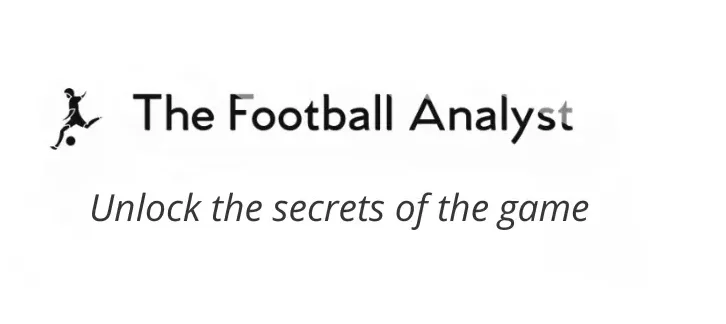In modern football, success often hinges on the ability of a team to create and exploit numerical advantages in various phases of the game. This tactical principle involves ensuring your team has more players than the opposition in specific areas of the pitch, allowing for better control, increased passing options, and the ability to dictate play. By manipulating space and positioning, teams can dominate key areas and nullify their opponents. In this comprehensive guide, we will break down the concept of numerical advantages, explore its applications in all phases of play, and analyze how elite teams use this principle to achieve consistent success.
What Is a Numerical Advantage?
A numerical advantage occurs when a team has more players than the opposition in a particular zone of the pitch. This advantage can be created intentionally through tactical planning or naturally as a result of player movements. Having numerical superiority provides several benefits:
- Increased Passing Options: With more players available, the team in possession can circulate the ball more effectively, reducing the likelihood of turnovers.
- Control Over Play: Outnumbering opponents allows a team to dictate the tempo of the game and maintain control in key areas.
- Tactical Flexibility: Teams with numerical superiority can switch between attacking and defensive phases more fluidly.
Numerical advantages are a fundamental aspect of both attacking and defensive strategies, forming the backbone of many modern football systems.
Types of Numerical Advantages
Numerical advantages can be categorized based on their application in different phases of the game. Understanding these distinctions is crucial for analyzing how teams implement them on the pitch:
Positional Numerical Advantage
This occurs when players position themselves strategically to outnumber opponents in specific areas. For instance, a box midfield can dominate a midfield three in a 1-4-2-3-1 system, giving the team control over central zones.
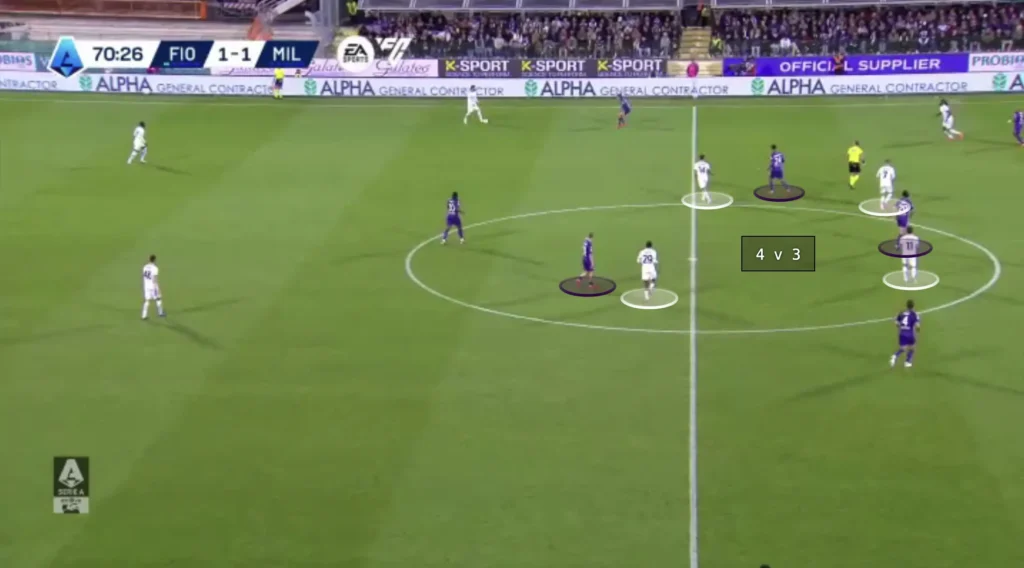
Situational Numerical Advantage
Temporary advantages arise during moments of dynamic play. For example, a counterattack might create a 3v2 scenario in the attacking third as the opposition struggles to recover defensively.
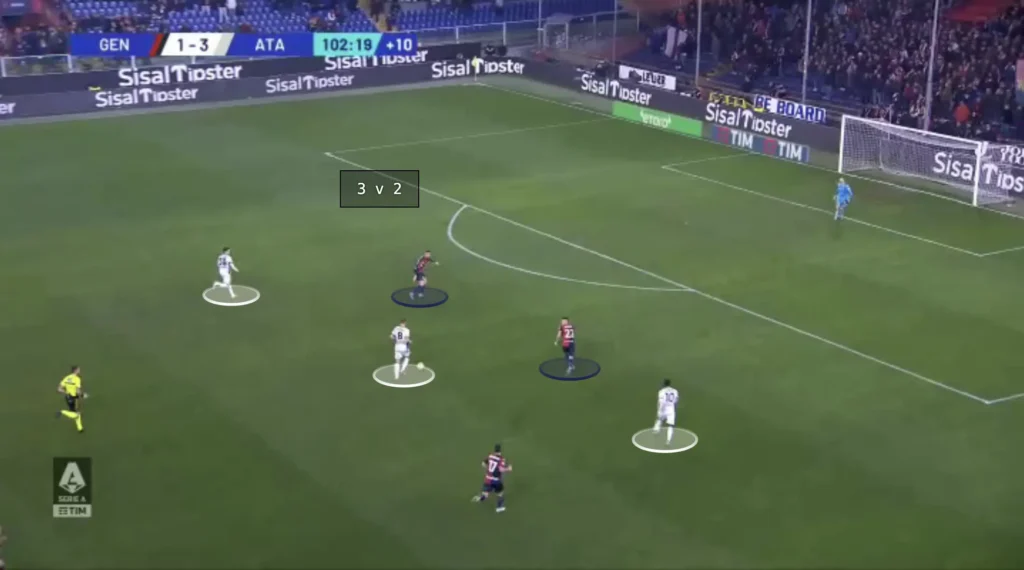
Zonal Numerical Advantage
Teams aim to create superiority in specific zones, such as the half-spaces or wide areas, often targeting specific players. Attacking fullbacks and inverted wingers are commonly used to generate these advantages and isolate defenders.

Defensive Numerical Advantage
A well-structured defense ensures more players in critical areas than the attacking opposition. For example, maintaining a +1 or +2 superiority in the box when defending crosses ensures effective coverage.
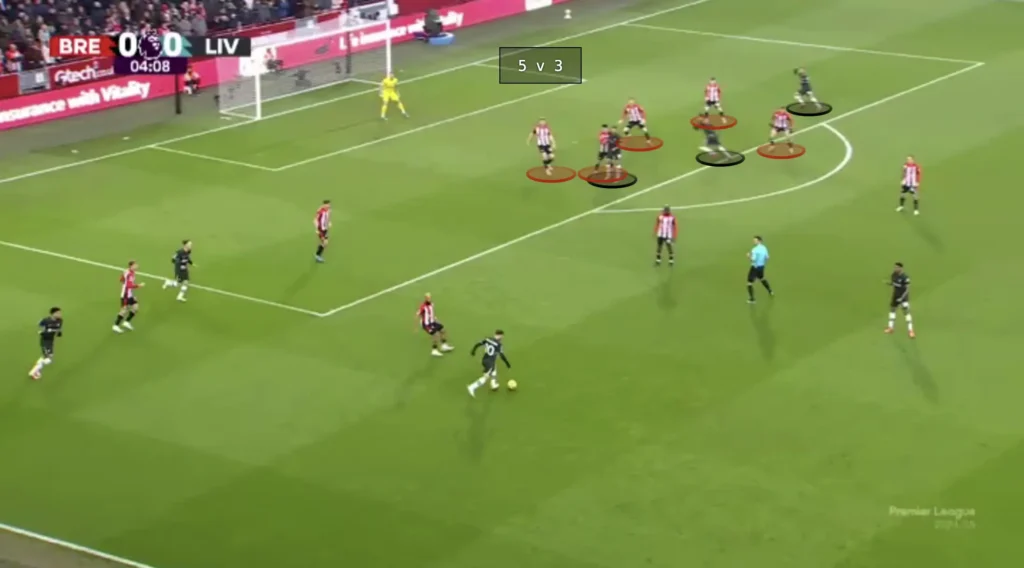
Rest-Defence Numerical Advantage
This involves maintaining a numerical edge behind the ball while attacking, ensuring that turnovers do not leave the team vulnerable to counterattacks. Rest-defence structures are particularly common among possession-dominant teams.

How to Create Numerical Advantages
Teams use a variety of tactical methods to create and exploit numerical advantages in different areas of the pitch. These methods require precise planning, coordinated movement, and intelligent decision-making:
Overloads
Overloading a zone involves committing additional players to outnumber the opposition. For example, in central areas, a team might use a 1-4-3-3 system with an inverted fullback or false nine to create a 4v3 situation against a midfield trio. Overloads can also occur in wide areas, where fullbacks and wingers combine to isolate an opposing defender.
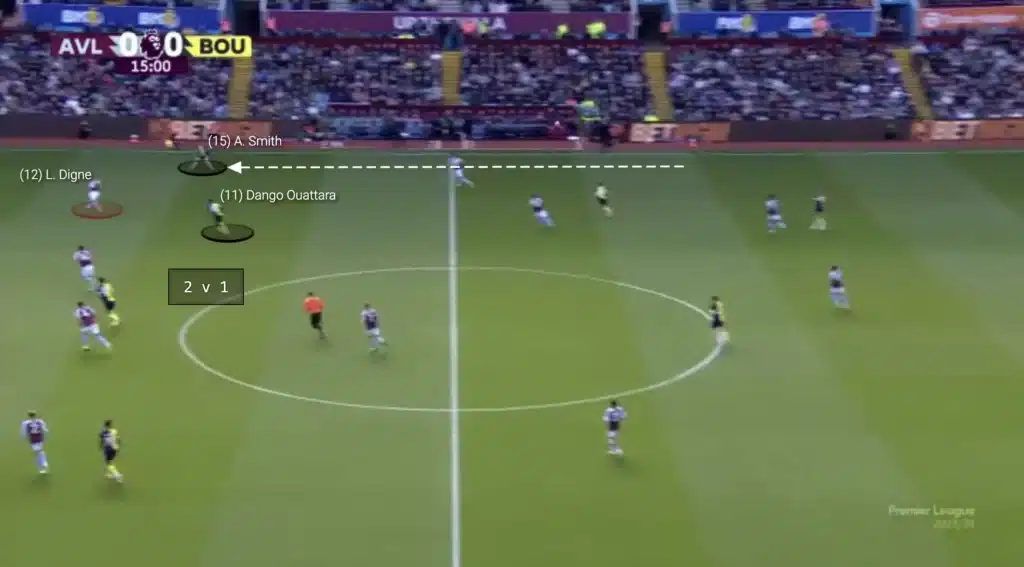
Rotations and Movements
Dynamic player movements can destabilize the opposition and create temporary numerical superiority. A common example is a striker dropping deep into midfield to create a 4v2 overload, pulling a defender out of position and opening space for advancing midfielders.
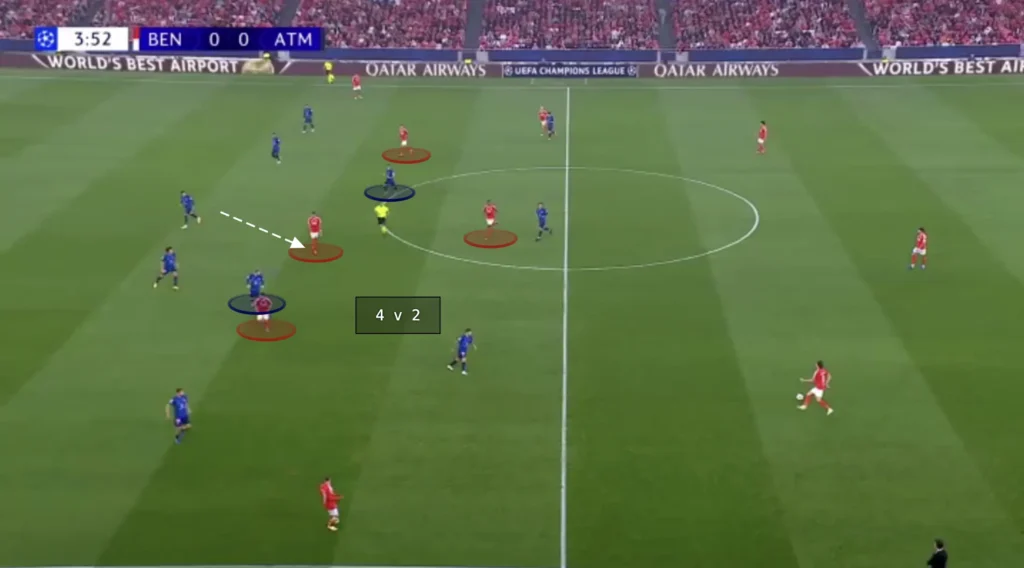
Switching Play
Quickly moving the ball from one side of the pitch to the other can isolate defenders and create 2v1 or 3v2 situations in wide areas. This is particularly effective against compact defensive setups.
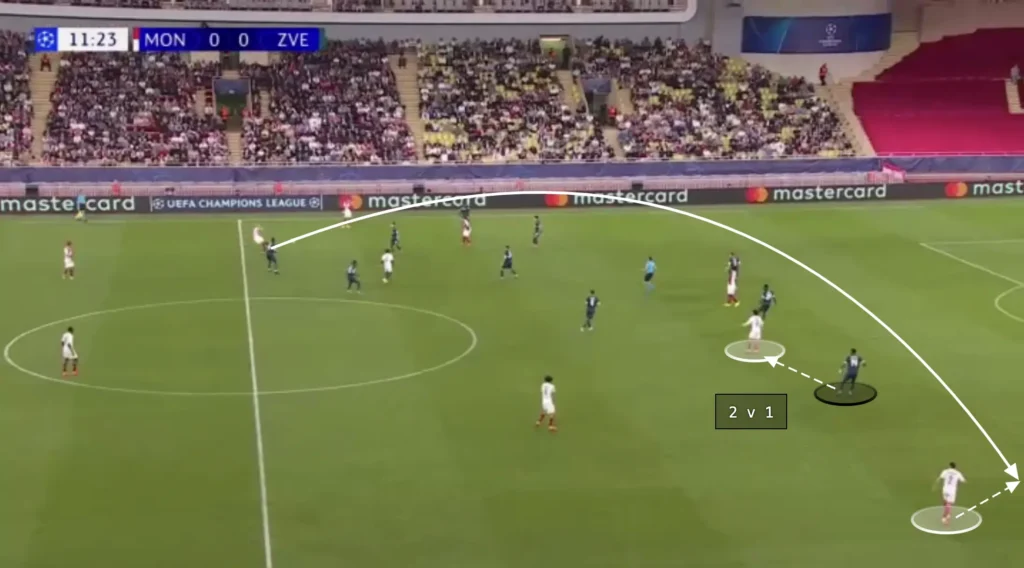
Using the Goalkeeper
In build-up play, the goalkeeper can act as an additional outfield player, creating a numerical advantage against a high press. Teams like Manchester City and FC Barcelona frequently employ this tactic to evade pressure and progress the ball.
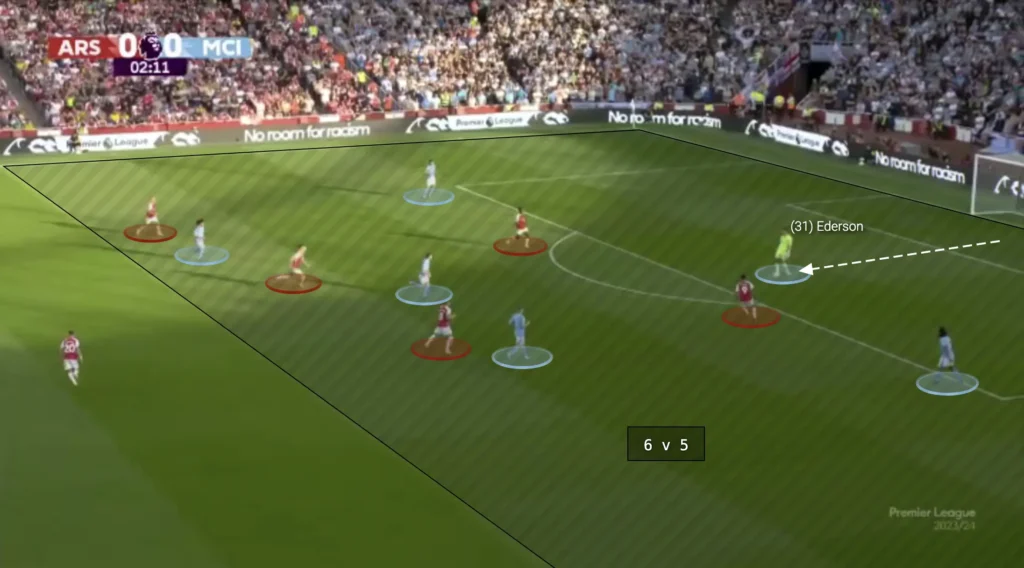
Pressing Triggers
High-pressing teams often aim to create numerical superiority around the ball by swarming the opposition in specific zones. This approach forces turnovers and allows for quick transitions.
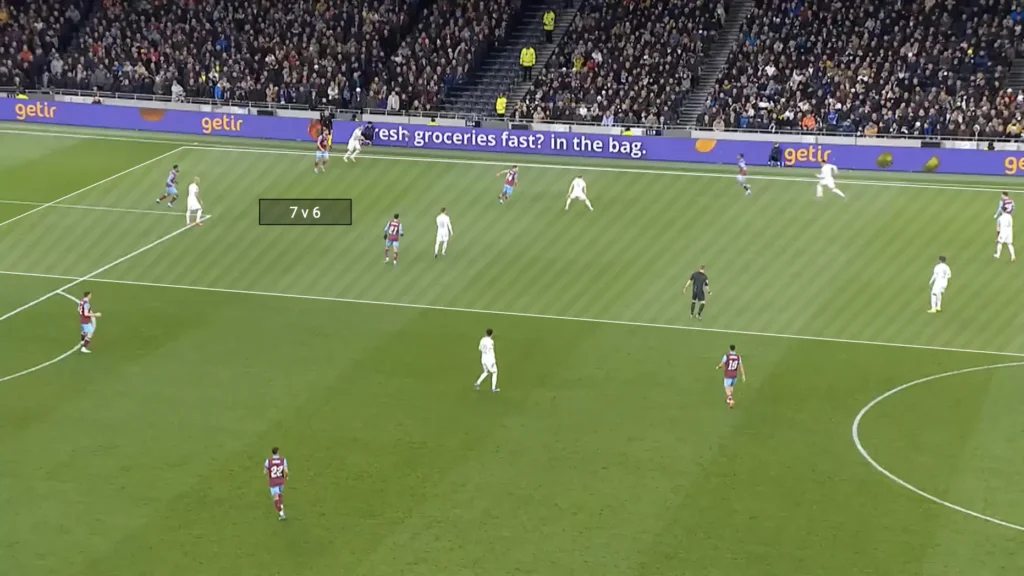
Numerical Advantages in Different Phases of Play
Numerical superiority is applied differently depending on the phase of play. Let’s explore its role in attacking, defending, and transitional phases:
Attacking Phase
- Build-Up Play: Teams create numerical advantages in the first line of build-up to evade the opponent’s press. A common example is a back three formation, which creates a 3v2 against a two-man forward press.
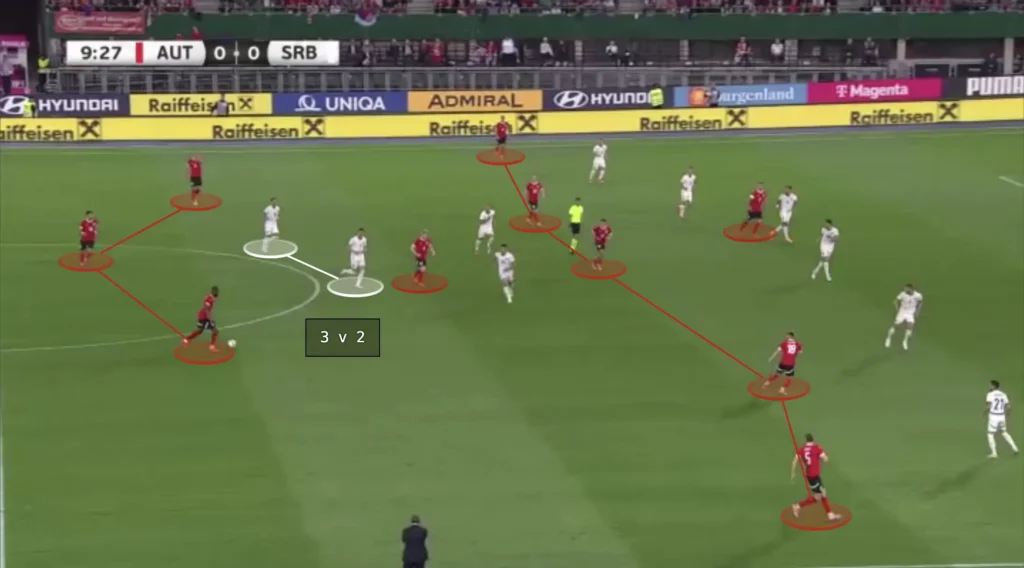
- Final Third: In the attacking third, overlapping and underlapping runs can be used to isolate defenders and open up crossing or shooting opportunities.
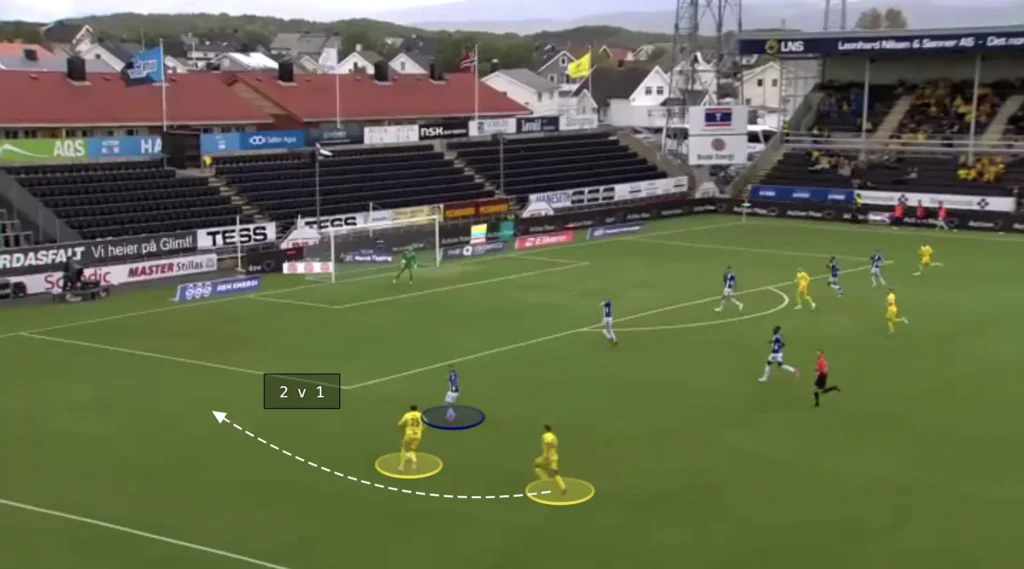
Defensive Phase
- Compactness: Teams maintain defensive numerical superiority by compacting their lines and ensuring a +1 or +2 advantage against opposition strikers.
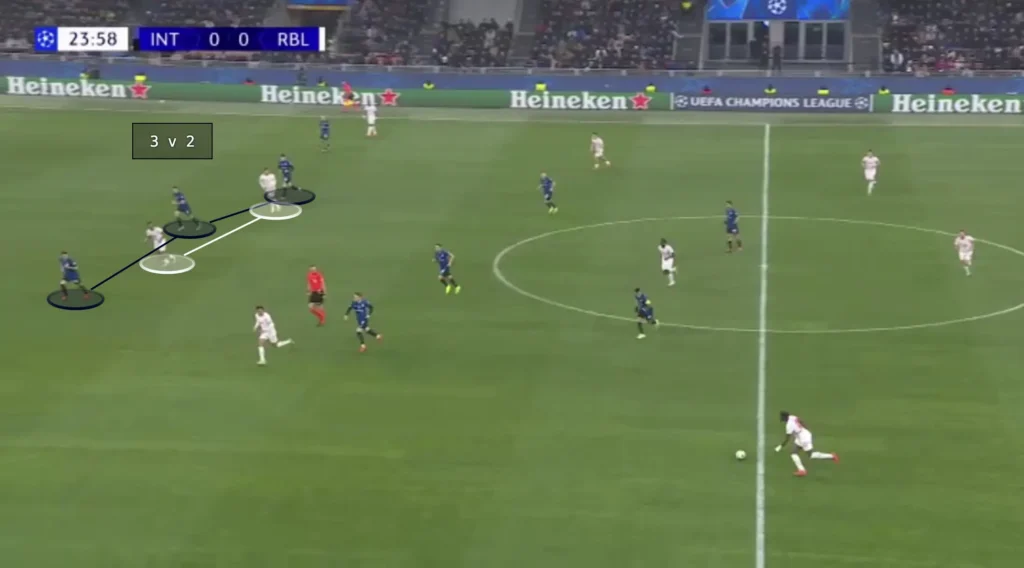
- Pressing: By overloading zones around the ball, defensive teams can force turnovers and regain possession quickly.
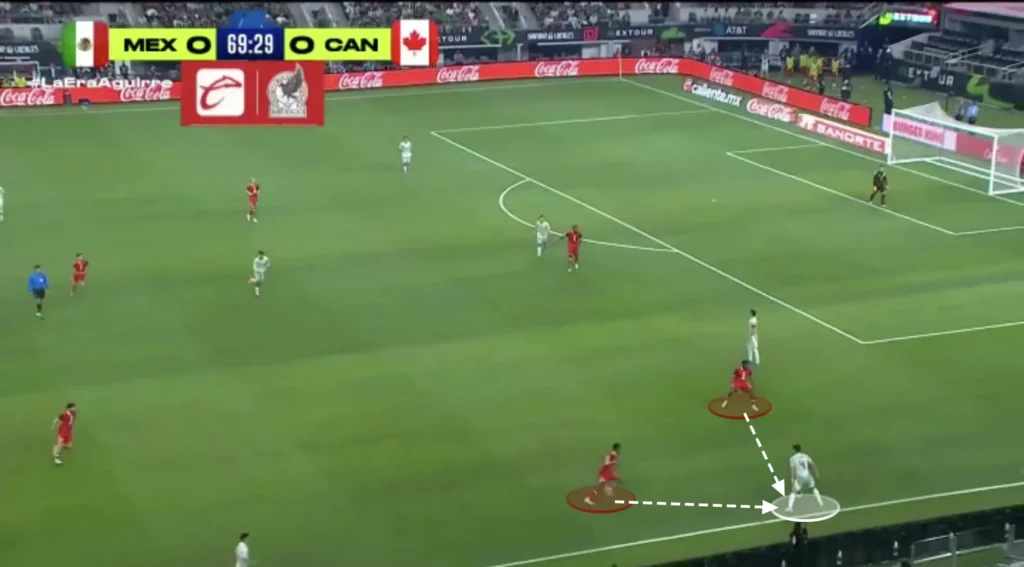
Transitional Phase
- Defensive Transitions: After losing the ball, teams with good rest-defence structures can quickly recover and neutralize counterattacks.
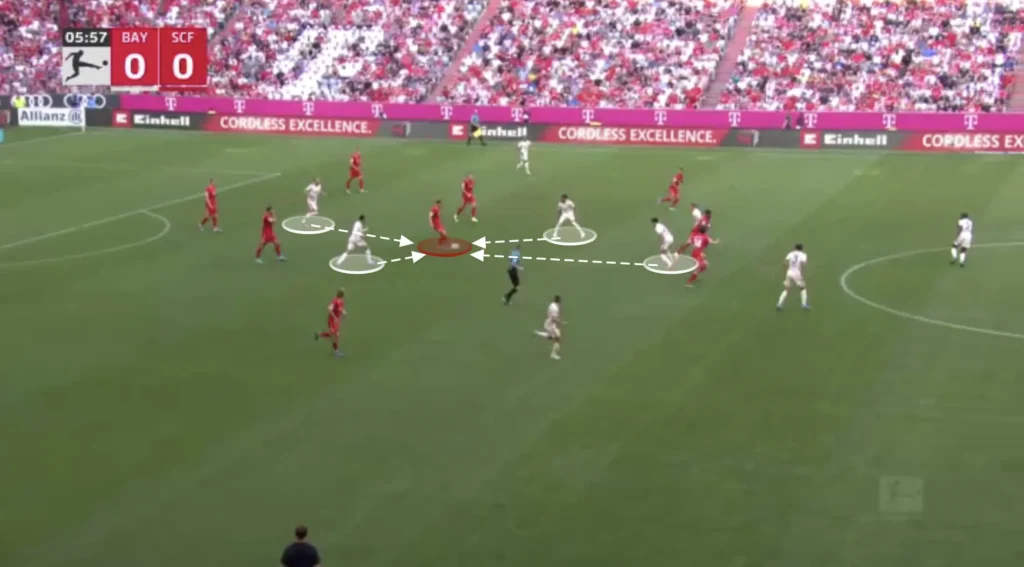
- Attacking Transitions: During counterattacks, teams exploit numerical superiority by surging forward with more players than the retreating defenders.
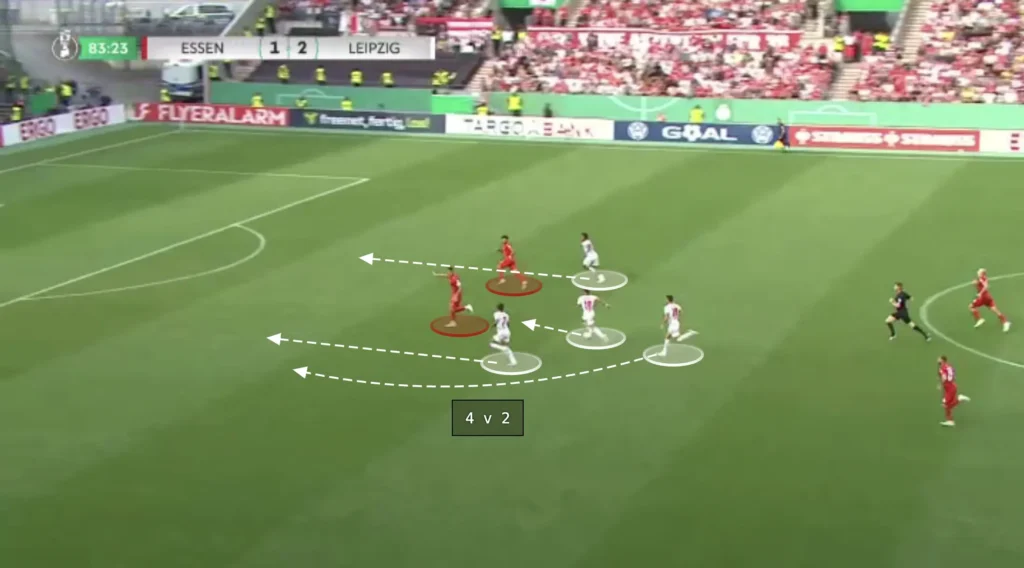
Case Studies of Numerical Advantages
Manchester City’s Positional Play
Pep Guardiola’s Manchester City is renowned for their ability to create numerical superiority in central areas. By using inverted fullbacks, City often have a 5v3 advantage in midfield, allowing them to dominate possession and control the tempo of games. Their ability to transition this advantage into the final third makes them one of the most potent attacking teams in Europe.
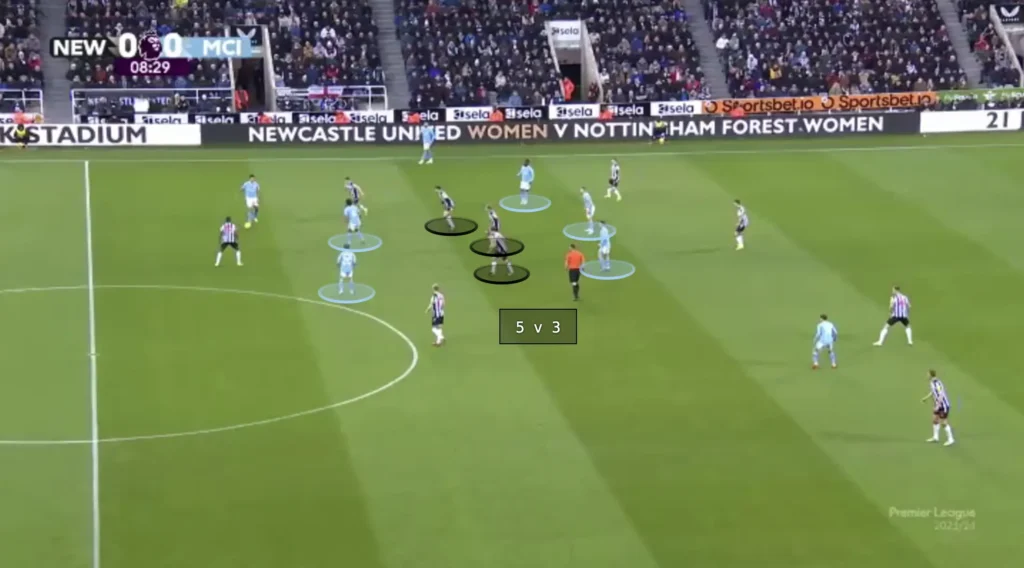
Liverpool’s Wide Overloads
Under Jürgen Klopp, Liverpool would frequently create wide overloads using their fullbacks and wingers. Trent Alexander-Arnold and Andy Robertson combined with Mohamed Salah and Sadio Mané to isolate opposition fullbacks and deliver dangerous crosses into the box.
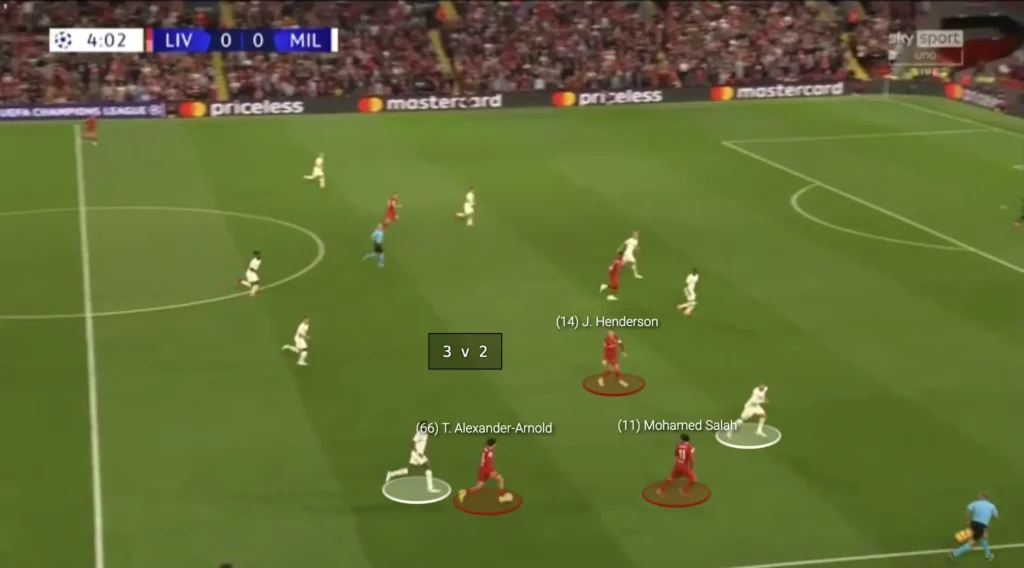
Marcelo Bielsa’s Defensive Blocks
Marcelo Bielsa’s teams are well-known for their relentless man-to-man marking approach across the pitch. However, a key aspect of his defensive system involves intentionally leaving one of the opposition’s center-backs unmarked. This tactic ensures Bielsa’s team maintains a +1 numerical advantage at the back, providing additional defensive security.
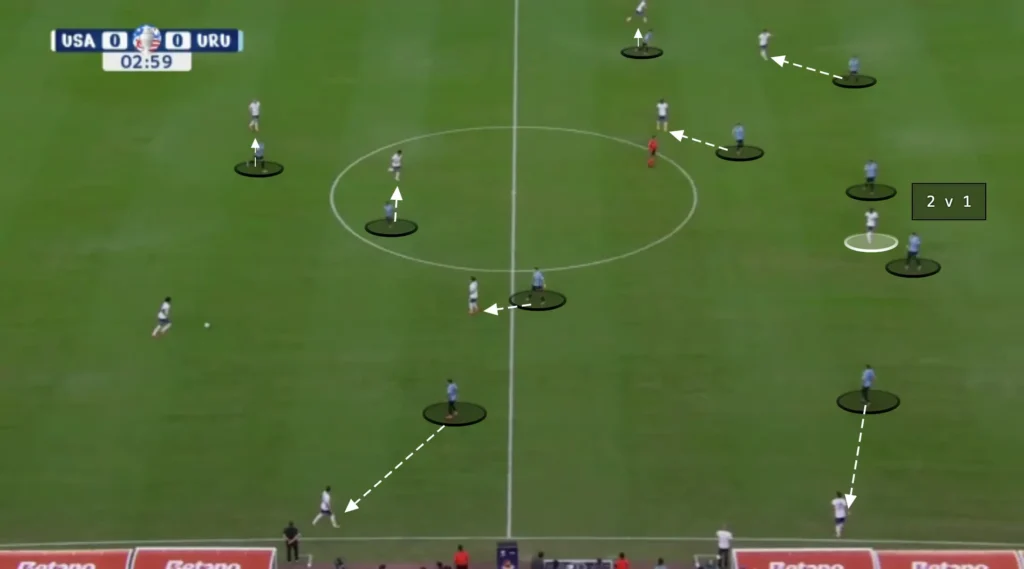
Brighton’s Build-Up Play
Brighton’s use of the goalkeeper in build-up play under Roberto De Zerbi created a numerical advantage against pressing teams. By involving the goalkeeper, Brighton consistently outnumbered their opponents in the first phase of play, allowing them to progress the ball effectively.
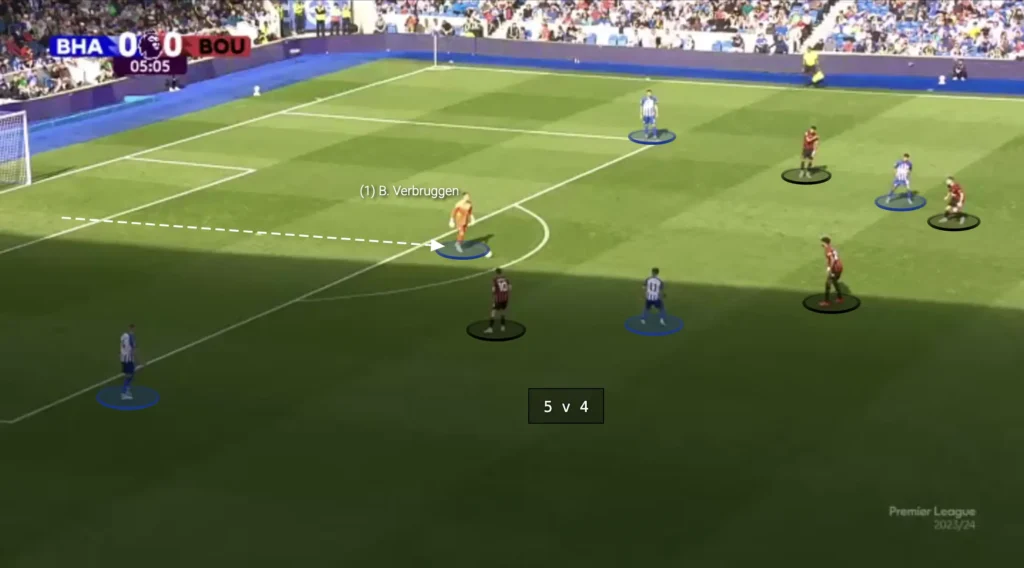
Challenges of Numerical Advantages
While creating numerical advantages provides significant tactical benefits, there are inherent challenges and risks:
- Exposure in Other Areas
Overloading one zone can leave other areas vulnerable. Opponents can exploit these spaces with quick switches of play or direct transitions. - Over-Commitment
Overcommitting players to an attack can result in being outnumbered defensively during transitions, leaving the team exposed. - Execution and Coordination
Numerical advantages rely on precise execution and coordinated movement. Poor positioning or decision-making can lead to congestion and turnovers. - Predictability
If a team relies too heavily on a specific type of numerical advantage, opponents can adapt by setting traps or employing counter-tactics.
Conclusion
Numerical advantages are a cornerstone of modern football tactics, providing teams with the tools to dominate possession, break down defenses, and control the game. Whether achieved through positional play, dynamic movements, or well-structured rest-defence setups, numerical superiority allows teams to impose their style and gain a decisive edge.
Mastering the creation and exploitation of numerical advantages requires a deep understanding of space, movement, and tactical nuances. As football continues to evolve, the ability to manipulate numerical superiority will remain a critical factor in determining success on the pitch. Whether you’re analyzing elite teams or looking to improve your own tactical knowledge, understanding this principle is key to appreciating the beautiful game.
